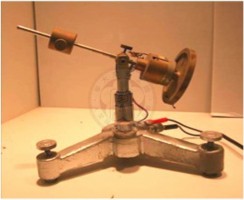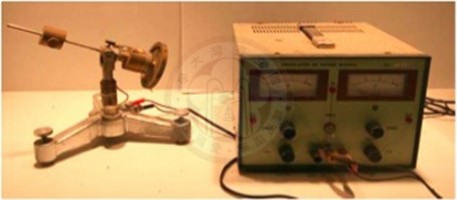TELDAP Collections
| Simple Rotary Motion Experiment |
|
A gyroscope is a device used to sense and maintain direction, designed by the law of conservation of angular momentum and constructed by a wheel whose central axis can be rotated. When the gyroscope starts rotating, because of the angular momentum of the wheel, it tends to resists the change of directions. The purpose of this experiment is to measure and verify the relationship of the angular moments between spin and rotation, and to compare the changes in the advancing speed of rotation when the disk is at various spin rate and the weighing mass is at different position (different moments).
Video Simple Rotary Motion Experiment
|














